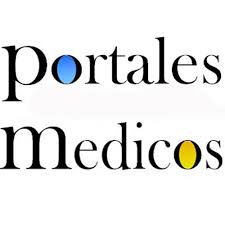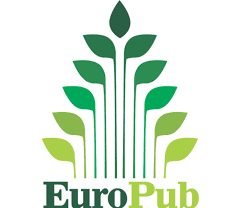Virulencia de staphylococcus asociada a piel y tejidos blandos
Staphylococcus virulence associated with skin and soft tissues
Resumen
DOI: https://doi.org/10.53766/GICOS/2024.09.03.18
Esta revisión narrativa tiene como objetivo presentar una visión actualizada de la literatura sobre los mecanismos de virulencia de Staphylococcus.sp asociada a infecciones de piel y tejidos blandos. A través de la búsqueda en bases de datos electrónicas: PubMed, BVS y Web of Science, obteniéndose 411 artículos, 15 artículos cumplieron con el objetivo de estudio. Encontrándose, que los mecanismos de virulencia, de mayor relevancia clínica fueron PVL, EsxA, EsxB, toxinas como spa, hla, fnbB, lukF-PV, clfA. Los genes como: gen mecA, gen que codifica PVL y TSST-1, SAgs, Agr-QS y genes Ica. Las proteínas que tuvieron relación con la adherencia de Staphylococcus, fueron Aap, SasG, SSL, AdsA, también Bap, SasC, FnBPA y FnBPB de S.aureus, y Aap, SSP1 y SSP2 de S. epidermidis. Concluyendo que el principal medio de protección a los Staphylococcus en infecciones de piel y tejidos blandos, es a través de evasión inmunitaria, supervivencia intracelular, prevención de apoptosis, la inhibición de la agregación plaquetaria, la desgranulación celular y el aumento de la producción de la citosina antiinflamatoria IL- 10.
This narrative review aims to present an updated view of the literature on the virulence mechanisms of Staphylococcus.sp associated with skin and soft tissue infections. Through the search in electronic databases: PubMed, BVS and Web of Science, 411 articles were obtained, 15 articles fulfilled the objective of the study. It was found that the most clinically relevant virulence mechanisms were PVL, EsxA, EsxB, toxins such as spa, hla, fnbB, lukF-PV, clfA. Genes such as: mecA gene, gene encoding PVL and TSST-1, SAgs, Agr-QS and Ica genes. The proteins that were related to Staphylococcus adherence were Aap, SasG, SSL, AdsA, also Bap, SasC, FnBPA and FnBPB of S. aureus, and Aap, SSP1 and SSP2 of S. epidermidis. Concluding that the main means of protection to Staphylococcus in skin and soft tissue infections is through immune evasion, intracellular survival, prevention of apoptosis, inhibition of platelet aggregation, cell degranulation and increased production of the anti-inflammatory cytokine IL-10.
Recibido: 06-04-2024
Aprobado: 03-06-2024
Publicado: 01-11-2024
Palabras clave
Texto completo:
PDFReferencias
Afzal, M., Vijay, A. K., Stapleton, F. & Willcox, M. (2022). Virulence Genes of Staphylococcus aureus Associated with Keratitis, Conjunctivitis, and Contact Lens-Associated Inflammation. Translational vision science & technology, 11(7), 1-10. https://doi.org/10.1167/tvst.11.7.5
Ahmad-Mansour, N., Loubet, P., Pouget, C., Dunyach-Remy, C., Sotto, A., Lavigne, J. P. & Molle, V. (2021). Staphylococcus aureus Toxins: An Update on Their Pathogenic Properties and Potential Treatments. Toxins, 13(10), 677. https://doi.org/10.3390/toxins13100677
Algammal, A. M., Hetta, H. F., Elkelish, A., Alkhalifah, D. H. H., Hozzein, W. N., Batiha, G. E., El Nahhas, N. & Mabrok, M. A. (2020). Methicillin-Resistant Staphylococcus aureus (MRSA): One Health Perspective Approach to the Bacterium Epidemiology, Virulence Factors, Antibiotic-Resistance, and Zoonotic Impact. Infection and drug resistance, 13, 3255–3265. https://doi.org/10.2147/IDR.S272733
Baroja, I., Guerra, S., Coral-Almeida, M., Ruíz, A., Galarza, J. M., de Waard, J. H. & Bastidas-Caldes, C. (2021). Methicillin-Resistant Staphylococcus aureus Nasal Colonization Among Health Care Workers of a Tertiary Hospital in Ecuador and Associated Risk Factors. Infection and drug resistance, 14, 3433–3440. https://doi.org/10.2147/IDR.S326148
Burbano Barreros, L. D., González Romero, A. C., Araujo Baptista, L. M., & Cruz Tenempaguay, R. E. (2020). Microorganismos más frecuentes en infecciones cutáneas en el Hospital Provincial General Ambato. REVISTA EUGENIO ESPEJO, 14(2), 19–29. https://doi.org/10.37135/ee.04.09.05
Centers for Disease Control and Prevention. (2019). Las infecciones mortales por estafilococo siguen siendo una amenaza en los EE. UU. https://shre.ink/TTM2
Centers for Disease Control and Prevention (2019). Antibiotic Resistance Threats Report | CDC. https://www.cdc.gov/drugresistance/biggest-threats.html#mrsa
Cheung, G. Y. C., Bae, J. S. & Otto, M. (2021). Pathogenicity and virulence of Staphylococcus aureus. Virulence, 12(1), 547–569. https://doi.org/10.1080/21505594.2021.1878688
Corazza, M., Borghi, A., Bettoli, V., Pora, R., Bononi, I., Mazzoni, E., Mazzola, E., Saraceni, S., Maritati, M., & Contini, C. (2021). Irrelevance of Panton-Valentine leukocidin in hidradenitis suppurativa: results from a pilot, observational study. European journal of clinical microbiology & infectious diseases: official publication of the European Society of Clinical Microbiology, 40(1), 77–83. https://doi.org/10.1007/s10096-020-04002-7
Gao, P., Wei, Y., Wan, R. E., Wong, K. W., Iu, H. T. V., Tai, S. S. C., Li, Y., Yam, H. C. B., Halebeedu Prakash, P., Chen, J. H. K., Ho, P. L., Yuen, K. Y., Davies, J., & Kao, R. Y. T. (2022). Subinhibitory Concentrations of Antibiotics Exacerbate Staphylococcal Infection by Inducing Bacterial Virulence. Microbiology spectrum, 10(4), e0064022. https://doi.org/10.1128/spectrum.00640-22
Guo, Y., Song, G., Sun, M., Wang, J. & Wang, Y. (2020). Prevalence and Therapies of Antibiotic-Resistance in Staphylococcus aureus. Frontiers in cellular and infection microbiology, 10, 107. https://doi.org/10.3389/fcimb.2020.00107
Heilmann, C., Ziebuhr, W. & Becker, K. (2019). Are coagulase-negative staphylococci virulent?. Clinical microbiology and infection: the official publication of the European Society of Clinical Microbiology and Infectious Diseases, 25(9), 1071–1080. https://doi.org/10.1016/j.cmi.2018.11.012
Idrees, M., Sawant, S., Karodia, N. & Rahman, A. (2021). Staphylococcus aureus Biofilm: Morphology, Genetics, Pathogenesis and Treatment Strategies. International journal of environmental research and public health, 18(14), 7602. https://doi.org/10.3390/ijerph18147602
Iqbal, M. S., Saleem, Y., Ansari, F., Qamar, M. U., Mazhar, S., Hassan, A., Nawaz, S., Saeed, S., & Syed, Q. (2018). Staphylococcus aureus carrying lukS/F Panton-Valentine Leukocidin (PVL) toxin genes in hospitals of Lahore city. Journal of infection in developing countries, 12(9), 720–725. https://doi.org/10.3855/jidc.9633
Jahan, N., Patton, T. & O'Keeffe, M. (2022). The Influence of Antibiotic Resistance on Innate Immune Responses to Staphylococcus aureus Infection. Antibiotics, 11(5), 542. https://doi.org/10.3390/antibiotics11050542
Kranjec, C., Morales Angeles, D., Torrissen Mårli, M., Fernández, L., García, P., Kjos, M., & Diep, D. B. (2021). Staphylococcal Biofilms: Challenges and Novel Therapeutic Perspectives. Antibiotics, 10(2), 131. https://doi.org/10.3390/antibiotics10020131
Lawal, O. U., Ayobami, O., Abouelfetouh, A., Mourabit, N., Kaba, M., Egyir, B., Abdulgader, S. M., & Shittu, A. O. (2022). A 6-Year Update on the Diversity of Methicillin-Resistant Staphylococcus aureus Clones in Africa: A Systematic Review. Frontiers in microbiology, 13, 860436. https://doi.org/10.3389/fmicb.2022.860436
Lindsay, J. A. (2019). Staphylococci: Evolving Genomes. Microbiology spectrum, 7(6), 10.1128/microbiolspec.GPP3-0071-2019. https://doi.org/10.1128/microbiolspec.GPP3-0071-2019
Lunjani, N., Hlela, C. & O'Mahony, L. (2019). Microbiome and skin biology. Current opinion in allergy and clinical immunology, 19(4), 328–333. https://doi.org/10.1097/ACI.0000000000000542
Maidol, E. M., Pérez, D. M., Pérez Rangeó, S. D., Candelo, E., & Ostrosky, A. M. (2019). Correlación de colonización de Staphylococcus aureus en mucosa nasal e infecciones faciales de origen no odontogénico. Rev. Ateneo Argent. Odontol, 49–53. https://pesquisa.bvsalud.org/portal/resource/es/biblio-1119832
Mills, K. B., Roy, P., Kwiecinski, J. M., Fey, P. D. & Horswill, A. R. (2022). Staphylococcal Corneocyte Adhesion: Assay Optimization and Roles of Aap and SasG Adhesins in the Establishment of Healthy Skin Colonization. Microbiology spectrum, 10(6), e0246922. https://doi.org/10.1128/spectrum.02469-22
Mohammad, M., Ali, A., Nguyen, M. T., Götz, F., Pullerits, R. & Jin, T. (2022). Staphylococcus aureus lipoproteins in infectious diseases. Frontiers in microbiology, 13, 1006765. https://doi.org/10.3389/fmicb.2022.1006765
Nguyen, H. T. T., Nguyen, T. H. & Otto, M. (2020). The staphylococcal exopolysaccharide PIA - Biosynthesis and role in biofilm formation, colonization, and infection. Computational and structural biotechnology journal, 18, 3324–3334. https://doi.org/10.1016/j.csbj.2020.10.027
Oliveira, D., Borges, A. & Simões, M. (2018). Staphylococcus aureus Toxins and Their Molecular Activity in Infectious Diseases. Toxins, 10(6), 252. https://doi.org/10.3390/toxins10060252
Organización Mundial de la Salud (OMS, 2022). Un informe pone de relieve el aumento de la resistencia a los antibióticos en infecciones bacterianas que afectan al ser humano y la necesidad de mejorar los datos al respecto. https://shre.ink/TQyq
Park, Y. J., Kim, C. W. & Lee, H. K. (2019). Interactions between Host Immunity and Skin-Colonizing Staphylococci: No Two Siblings Are Alike. International journal of molecular sciences, 20(3), 718. https://doi.org/10.3390/ijms20030718
Prince, A. & Wong Fok Lung, T. (2020). Consequences of Metabolic Interactions during Staphylococcus aureus Infection. Toxins, 12(9), 581. https://doi.org/10.3390/toxins12090581
Rasmi, A. H., Ahmed, E. F., Darwish, A. M. & Gad, G. F. (2022). Virulence genes distributed among Staphylococcus aureus causing wound infections and their correlation to antibiotic resistance. BMC infectious diseases, 22(1), 652. https://doi.org/10.1186/s12879-022-07624-8
Rungelrath, V. & DeLeo, F. R. (2021). Staphylococcus aureus, Antibiotic Resistance, and the Interaction with Human Neutrophils. Antioxidants & redox signaling, 34(6), 452–470. https://doi.org/10.1089/ars.2020.8127
Sakr, A., Brégeon, F., Mège, J. L., Rolain, J. M. & Blin, O. (2018). Staphylococcus aureus Nasal Colonization: An Update on Mechanisms, Epidemiology, Risk Factors, and Subsequent Infections. Frontiers in microbiology, 9, 2419. https://doi.org/10.3389/fmicb.2018.02419
Salazar-Ospina, L. & Jiménez, J. N. (2018). High frequency of methicillin-susceptible and methicillin-resistant Staphylococcus aureus in children under 1 year old with skin and soft tissue infections. Jornal de Pediatria, 94(4), 380–389. https://doi.org/10.1016/j.jped.2017.06.020
Speziale, P. & Pietrocola, G. (2021). Monoclonal Antibodies Targeting Surface-Exposed and Secreted Proteins from Staphylococci. Vaccines, 9(5), 459. https://doi.org/10.3390/vaccines9050459
Socohou, A., Sina, H., Degbey, C., Adjobimey, T., Sossou, E., Boya, B., N'tcha, C., Adoukonou-Sagbadja, H., Adjanohoun, A. & Baba-Moussa, L. (2021). Pathogenicity and Molecular Characterization of Staphylococcus aureus Strains Isolated from the Hospital Environment of CHU-Z Abomey-Calavi/Sô-Ava (Benin). BioMed research international, 2021, 6637617. https://doi.org/10.1155/2021/6637617
Tahmasebi, H., Dehbashi, S. & Arabestani, M. R. (2019). Association between the accessory gene regulator (agr) locus and the presence of superantigen genes in clinical isolates of methicillin-resistant Staphylococcus aureus. BMC research notes, 12(1), 130. https://doi.org/10.1186/s13104-019-4166-7
Tamai, M., Yamazaki, Y., Ito, T., Nakagawa, S. & Nakamura, Y. (2023). Pathogenic role of the staphylococcal accessory gene regulator quorum sensing system in atopic dermatitis. Frontiers in cellular and infection microbiology, 13, 1178650. https://doi.org/10.3389/fcimb.2023.1178650
Tasneem, U., Mehmood, K., Majid, M., Ullah, S. R., y Andleeb, S. (2022). Methicillin resistant Staphylococcus aureus: A brief review of virulence and resistance. JPMA. The Journal of the Pakistan Medical Association, 72(3), 509–515. https://doi.org/10.47391/JPMA.0504
Taylor, T. A. & Unakal, C. G. (2022). Staphylococcus Aureus. In StatPearls. StatPearls Publishing.
Vale de Macedo, G. H. R., Costa, G. D. E., Oliveira, E. R., Damasceno, G. V., Mendonça, J. S. P., Silva, L. D. S., Chagas, V. L., Bazán, J. M. N., Aliança, A. S. D. S., Miranda, R. C. M., Zagmignan, A., Monteiro, A. S. & Nascimento da Silva, L. C. (2021). Interplay between ESKAPE Pathogens and Immunity in Skin Infections: An Overview of the Major Determinants of Virulence and Antibiotic Resistance. Pathogens, 10(2), 148. https://doi.org/10.3390/pathogens10020148
Vendrik, K. E. W., Kuijper, E. J., Dimmendaal, M., Silvis, W., Denie-Verhaegh, E., de Boer, A., Postma, B., Schoffelen, A. F., Ruijs, W. L. M., Koene, F. M. H. P. A., Petrignani, M., Hooiveld, M., Witteveen, S., Schouls, L. M., Notermans, D. W. & MRSA consortium (2022). An unusual outbreak in the Netherlands: community-onset impetigo caused by a meticillin-resistant Staphylococcus aureus with additional resistance to fusidic acid, June 2018 to January 2020. Euro surveillance: bulletin Europeen sur les maladies transmissibles = European communicable disease bulletin, 27(49), 2200245. https://doi.org/10.2807/1560-7917.ES.2022.27.49.2200245
Vlaeminck, J., Raafat, D., Surmann, K., Timbermont, L., Normann, N., Sellman, B., van Wamel, W. J. B. & Malhotra-Kumar, S. (2020). Exploring Virulence Factors and Alternative Therapies against Staphylococcus aureus Pneumonia. Toxins, 12(11), 721. https://doi.org/10.3390/toxins12110721
Wójcik-Bojek, U., Różalska, B. & Sadowska, B. (2022). Staphylococcus aureus-A Known Opponent against Host Defense Mechanisms and Vaccine Development-Do We Still Have a Chance to Win?. International journal of molecular sciences, 23(2), 948. https://doi.org/10.3390/ijms23020948
Enlaces refback
- No hay ningún enlace refback.
Depósito Legal Electrónico: ME2016000090
ISSN Electrónico: 2610-797X
DOI: https://doi.org/10.53766/GICOS
| Se encuentra actualmente registrada y aceptada en las siguientes base de datos, directorios e índices: | |||
 | |||
 |  |  |  |
 |  | ||
 |  |  |  |
 |  |  |  |
 |  |  |  |
 |  |  |  |
![]()
Todos los documentos publicados en esta revista se distribuyen bajo una
Licencia Creative Commons Atribución -No Comercial- Compartir Igual 4.0 Internacional.
Por lo que el envío, procesamiento y publicación de artículos en la revista es totalmente gratuito.

